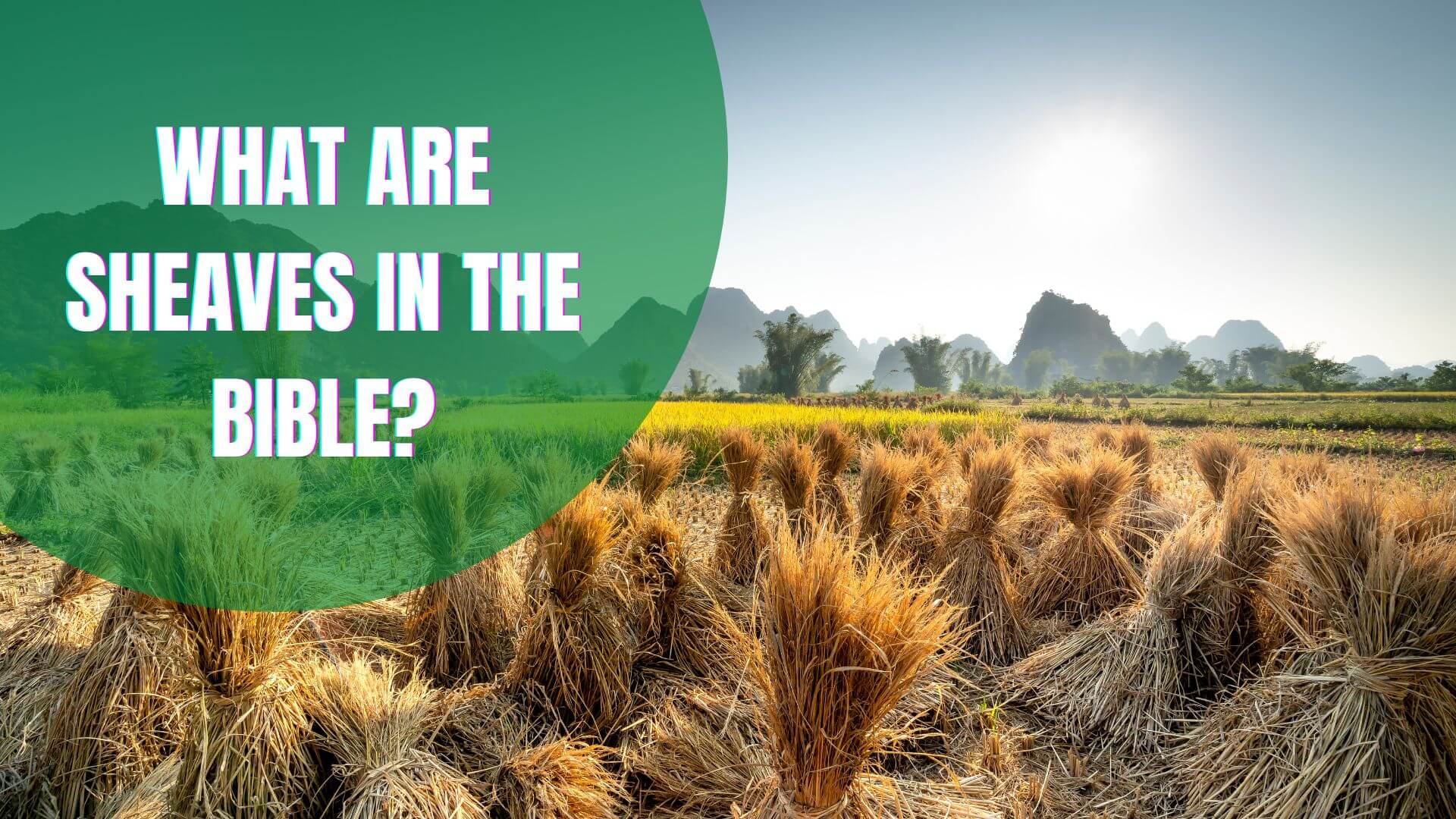Sheaves are mentioned in the Bible 79 times. Each sheaf represents one year of your life, and each one of those years will bring its own opportunities. All you need to do is reach out and take them!
What are Sheaves in the Bible?
The sheaves in the Bible are two: the first is the sheaf of barley, which was offered as a sacrifice. The second is the sheaves of wheat, which were brought to be threshed out.
Sheaves in Bible – Sheaf of Barley
In Leviticus 24:5-13, God ordered Aaron and his sons to collect from all Israelites one-tenth of everything they owned at harvest time and bring it to Jerusalem for a burnt offering so that he would give them peace on earth.
The people got their first fruits together for this purpose (Leviticus 23:10-14). After Aaron’s sons finished carrying out their duty, they divided it into three parts—one for each son (Numbers 18:12) and one for each family (Leviticus 6:17).
The firstborn son received twice as much as his share (Numbers 18:15-18), which shows that he must have been very wealthy or essential because the law says that if a man gives away his property.
Sheaves in Bible – sheaf of wheat
The sheaf of wheat is a symbol of abundance, fertility, and rest. It is also used to represent the church in Revelation 11:12-13. The sheaf of wheat is seen as the church’s harvest after being sown on the earth by God’s Word (Galatians 6:7).
The sheaf of wheat is a symbol of Jesus Christ Himself. It represents His sacrifice on the cross and His resurrection from the dead (Matthew 13:30).
The sheaf stands as a reminder that we are called to follow in His footsteps and make ourselves ready for our heavenly inheritance (John 15:16).
What is the spiritual meaning of Sheaves?
- A ground represents the house of worship
- Hanging wheat on the ground means the reality in the chapel.
As a result, a sheaf containing corn denotes teachings containing truth. Sheaves in David have a similar meaning: —
According to Psalms 126:5 and 6, They that sow in tears shall reap with singing; going he shall go and weeping he that beareth the cast of seed, but coming he shall come with singing, bearing his sheaves.
The verse states of individuals, many of whom have been freed from transcendental slavery. To arrive with song suggests the joy of the passion of reality, to carry the casting of grain indicates teaching in truths, and taking the sheaves, the love of truth.
What were Sheaves used for?
Integrated onto a Pulley, a sheave or pulley wheel is a perforated tire frequently applied for:
- retaining a chain,
- cordage, or twine.
The sheave is said to rotate on a wheel or axle in the pulley’s structure.
This reduces frictional forces on the line by allowing the cable or cord to travel smoothly. Sheaves could raise objects, convey energy, and reroute a cord or line.
Be aware that the terms “sheave” and “pulley” can occasionally be applied similarly.
What are Sheaves in bringing in the Sheaves?
The famous American evangelical song “Bringing in the Sheaves” is virtually entirely sung by Protestant Christians.
This same song was inspired in 1874 by Knowles Shaw, who had been motivated by Psalm 126:6, “He that goeth forth and weepeth, bearing precious seed, shall doubtless come again with rejoicing, bringing his sheaves with him.”
Although these lines were initially arranged to a song by George Minor, who composed them in 1880, Knowles Shaw also wrote songs for them.
Bringing in the Sheaves. (wiki/bringing_in_the_sheaves)
“Sowing in the morning, sowing seeds of kindness,
Sowing in the noontide and the dewy eve;
Waiting for the harvest, and the time of reaping,”
“We shall come rejoicing, bringing in the sheaves.
Refrain:
Bringing in the sheaves, bringing in the sheaves,
We shall come rejoicing, bringing in the sheaves,”
“Bringing in the sheaves, bringing in the sheaves,
We shall come rejoicing, bringing in the sheaves.
Sowing in the sunshine, sowing in the shadows,”
“Fearing neither clouds nor winter’s chilling breeze;
By and by, the harvest, and the labor ended,
We shall come rejoicing, bringing in the sheaves.
Refrain”
“Going forth with weeping, sowing for the Master,
Though the loss is sustained, our spirit often grieves;
When our weeping’s over, He will bid us welcome,
We shall come rejoicing, bringing in the sheaves.”
What are Sheaves in Hebrew?
The Hebrew term for this offering was omer. It had been a wheat sacrifice attempted to bring to the Jerusalem monastery as a wave offering.
Immediately after Passover, a sheaf of barley became offered as the first fruit during the Feast of Unleavened Bread.
Shavuot is when bread loaves, the first fruits of the second harvest, are given. Both had been wave offerings. A few of the twenty-four priestly presents were the korban’s leftovers, which the kohen retained.
Aaron likewise made a wave offering to God consisting of the Levitical priests.
After the Second Temple was destroyed, the omer offering was abandoned.
The Jewish priests offered a sheaf sacrifice and an omer sacrifice to God (Exodus 29:24, 26, 27; Leviticus 7:20-34; 8:27; 9:21; 10:14, 15, etc.). The priesthood subsequently took possession of the bundle, omer, or wave offering.
The Almighty then instructed Moses as follows:
“Speak to the sons of Israel and say to them, ‘When you enter the land which I am going to give to you and reap its harvest, then you shall bring in the sheaf of the first fruits of your harvest to the priest. He shall wave the sheaf before the Lord for you to be accepted; on the day after the sabbath the priest shall wave it.”
In the English versions, an omer is frequently translated as “sheaf.” Like terumah, the heaving offering is produced out of the verb rum “heave,” and the term terefah is created out of the verb.
In Exodus 29:27, both kinds of offerings are made simultaneously.
Leviticus 7:30–34 in Jm The right thigh served as a heave offering by the slain ram, and the chest, including its fat, served as a wave offering, each of which was presented to the priests as kohanic presents.







